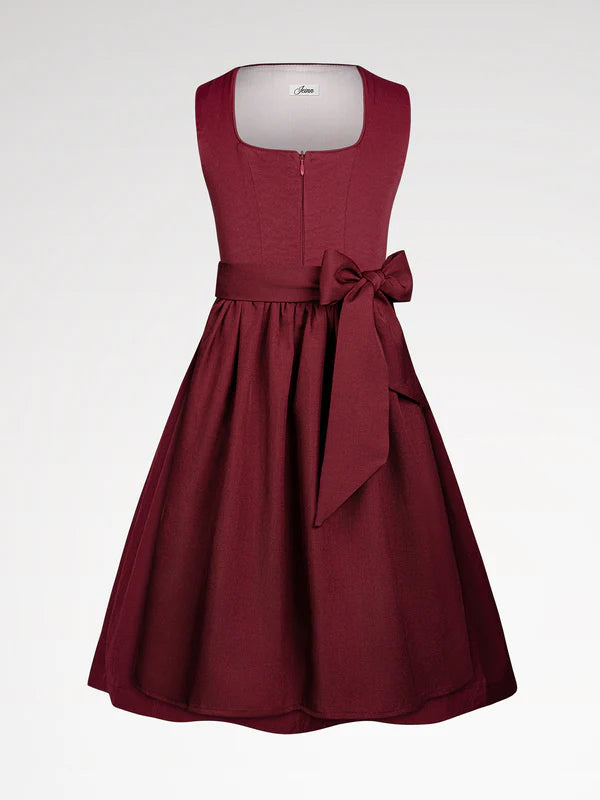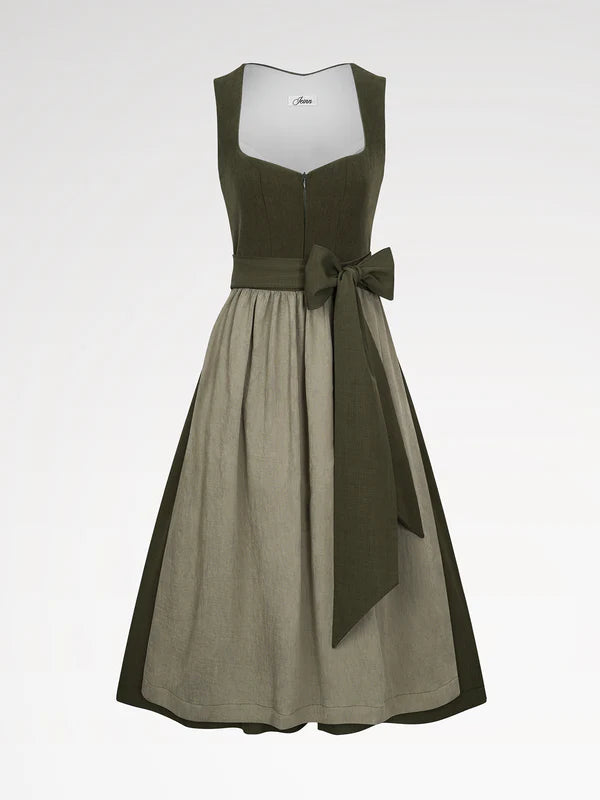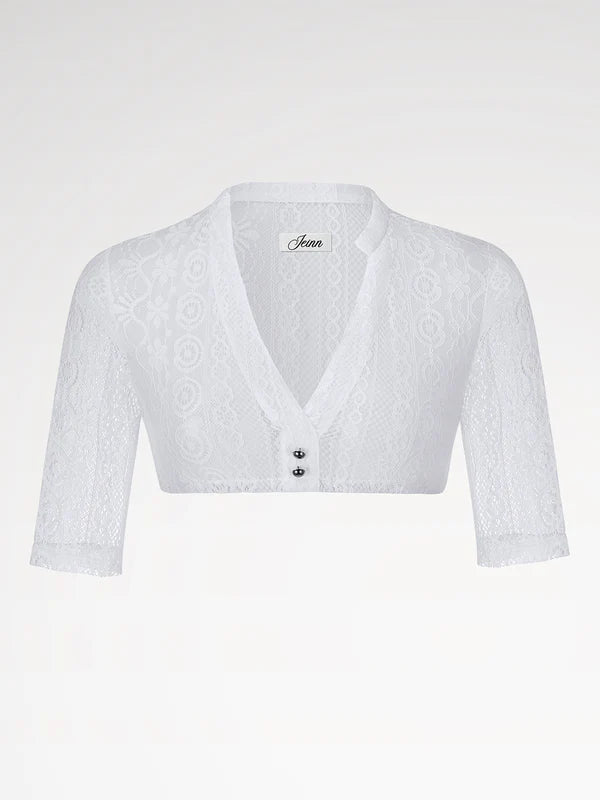Dirndl dresses have a long and fascinating history. They are an important part of Bavarian and Austrian culture and are now also appreciated and worn in many other parts of the world.
The dirndl with front zipper
A Dirndl with front zipper offers not only practical advantages but also a modern touch. Many women prefer this design because it makes putting on and taking off the dress easier. The zipper can usually be carefully concealed so that it doesn't detract from the classic look of the dirndl. For traditional events where you want to quickly change, for example, from a party to a dance, a dirndl with a zipper is a great solution.
"I bought a dirndl with a zipper last year, and it was such a much more comfortable experience. I could dress myself and didn't have to constantly wait for help," says Lisa, a passionate dirndl wearer. But there are also points of criticism. Some traditionalists claim that a dirndl with a zipper no longer reflects the pure essence of tradition.
The beige dirndl dress
The beige dirndl dress has a special appeal. It exudes elegance and a touch of naturalness. In contrast to the boldly colored dirndls, beige exudes a subtle beauty. It's perfect for summer events where the sun is shining and the light color blends well with the surroundings.
"When I stand in the meadow at a folk festival in my beige dirndl, I feel like I'm part of nature. It's so peaceful and beautiful," says Hanna. However, you do have to be careful when wearing a beige dirndl when cleaning it. Since it stains more easily, it can quickly look dirty if you're not careful.
The red-green dirndl
The red and green dirndl is a true eye-catcher. The red represents passion and the power of nature, while the green symbolizes freshness and vitality. This color scheme is often associated with rural traditions and is reminiscent of the beautiful landscapes in which dirndl culture originated.
“I have my red green dirndl for the Oktoberfest celebration and I was immediately admired by many. It's a color combination that lifts the mood," reports Tina. But there's a point of conflict here, too. The combination of red and green must be carefully chosen so it doesn't look too overloaded. Too much green can make the dirndl appear too earthy, and too much red can make it too obtrusive.
There are many facets to discover in the world of dirndl dresses. Each variant has its advantages and disadvantages, its specific uses, and its cultural background.
We should also remember the production of dirndl dresses. Traditional dirndl dresses were mostly made by hand. Highly experienced seamstresses used their craftsmanship to perfect every detail. But over time, industrial production has also developed. Today, dirndl dresses are available in various price ranges and quality levels.
While handmade dirndl dresses often have a higher quality and a more individual touch, industrially produced ones are usually cheaper and more readily available. Some women strive to own a unique, handmade dirndl to emphasize their love of tradition.Others, on the other hand, are satisfied with a well-designed, industrially produced model that serves them on various occasions.
The dirndl is also worn in a variety of ways. The classic style involves tucking the blouse neatly in and perfectly tying the bow. However, in modern times, there are also creative interpretations. Sometimes the blouse is worn loosely, or the bow is arranged in a special way to create a new and individual look.
The Dirndl on the fashion stage
The dirndl has also carved out a place for itself in the fashion world. Some designers take it as inspiration and create fashionable collections based on the dirndl design. The traditional form is combined with modern fabrics and cuts. This is leading to a change in the perception of the dirndl. It is no longer seen merely as a traditional garment, but also as a fashionable accessory.
"I recently saw a fashion show that incorporated dirndl elements. It was so fascinating how the traditional form was transformed into a modern shape," says Sarah. But here, too, there's debate about whether this modern interpretation loses the true meaning and soul of the dirndl, or whether it offers a new way to carry the tradition forward.
Dirndl and cultural identity
The dirndl is also an important symbol of cultural identity. In Bavaria and Austria, it is worn especially at important cultural celebrations. It connects people to their homeland and their history. Children grow up wearing it and learn that this garment has special significance.
"When I wear my dirndl, I feel proud of my heritage. It's like a part of me, of my family, and my region," explains Klara. But in an increasingly globalized world, the cultural identity behind the dirndl must also be preserved. We must strive to ensure that the next generation understands and appreciates the meaning and beauty of this traditional garment.
The future of the dirndl
What will become of the dirndl in the future? Will it continue to play an important role in our culture? The answer likely lies in the balance between tradition and innovation. We must preserve the traditional values and cultural significance of the dirndl while simultaneously allowing room for creative interpretations and modern adaptations.
We should strive to ensure that the dirndl is not only remembered as a nostalgic garment, but also remains alive in the present and in the future. Whether it is the dirndl with a zipper in the front, the dirndl dress beige Whether it's the red and green dirndl, each style has its own story and meaning. Let's carry on and develop this tradition so that it remains a source of joy and cultural identity for future generations.





Leave a comment
This site is protected by hCaptcha and the hCaptcha Privacy Policy and Terms of Service apply.